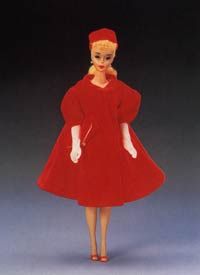For more than four decades, the popular doll known as Barbie has given young girls a chance to preview every imaginable career. At the same time, Barbie has kept up with women's fashion, switching each decade from vintage 1960s Parisienne chic to bell bottoms to business class. She's the ultimate shape-shifter, available in every career or theme imaginable -- "Cinco de Mayo", "Alice in Wonderland" and "Barbie Learns to Cook" are just a handful of possible Barbie styles. There are actually four separate versions of Cher -- two "regular" versions, a 1970s Cher and a 1980s Cher!
Her shape has also created controversy over the years -- despite providing young girls with a career-oriented role model, many argue that Barbie's body type is unrealistic and impossible. If Barbie sprung to life as a grown-up, 5-foot-9-inch woman, her bust-waist-hip measurements would be an unbelievably unnatural 36-18-33. Some claim girls who play with Barbie dolls might receive a distorted view of beauty and appearance. Some even suggest the dolls reinforce negative and conflicting stereotypes of women as weak, submissive and unintelligent. So how did Barbie get her start?
Advertisement
Barbie began when Ruth Handler, co-founder of Mattel, saw her daughter, Barbara, playing with paper dolls. This wasn't anything out of the ordinary for little girls at the time, as paper dolls were a popular toy. But Ruth noticed something interesting -- her daughter enjoyed imagining the dolls in grown-up scenarios and not as infants. She suggested to Mattel the possibility of an adult female doll, one that could give young girls inspiration for the future. The idea was rejected, though, because executives felt that girls would not have enough interest in a potentially expensive doll.
With her idea in mind she traveled to Europe, and Handler discovered a popular German doll named Lilli. She brought the doll back to the United States and, using Lilli for inspiration, completed the design for Barbie. (The doll is named Barbie, of course, after Handler's daughter, Barbara.) With skepticism, Mattel finally agreed to produce the doll and introduce her during the 1959 American Toy Fair in New York City. Barbie proved to be a huge success with young girls and still remains one of the world's most recognizable toys.
The Ken doll was introduced two years later in 1961, and Barbie has amassed her own posse of friends over the years. She continues to capitalize on trends -- recent Barbies come tricked out with iPods -- and serious collectors looking for a nostalgia pay large sums of money for vintage Barbie dolls.
For more information on Barbie, Mattel and related topics, check out the links on the next page.
Advertisement
